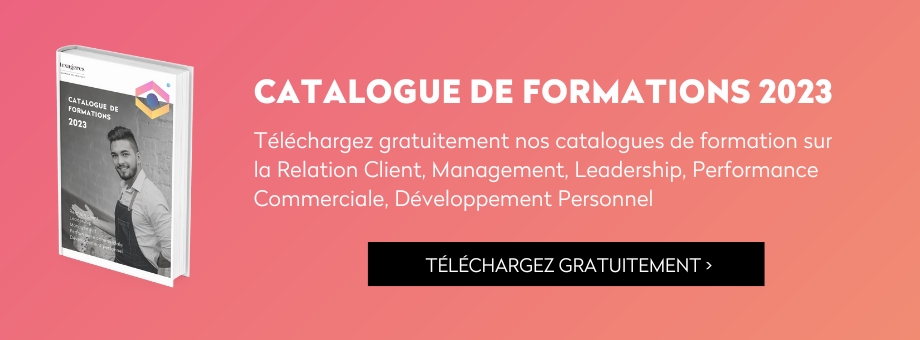Easier to declare than to apply, diversity in business is everyone’s responsibility.
In recent years, the #MeToo and #BlackLivesMatter movements have accelerated changes in mindset.
While schools were entrusted with the mission of equal opportunities for boys and girls and the fight against prejudice and discrimination in France at the beginning of the 1980s, it took several decades for companies to become active on the subject.
This raises the question of what needs to be done to increase equality in the workplace.
To help you, we have identified 10 actions to be implemented quickly to accelerate equal opportunities in your organisation.
So, are you ready to take up the challenge?
10 actions for diversity in business that you can implement today:
- Permanently remove divisive behaviours and expressions
- Define what ‘inclusion’ means
- Communicating the benefits of diversity to your team
- Recruit without discrimination
- Putting together a cosmopolitan team and building on each other’s differences
- Ensuring gender equality
- Accepting differences in gender and sexual orientation
- Promoting work with people with disabilities
- Understanding the scale of inference
- Combating cognitive bias
Permanently remove divisive behaviours and expressions
What is the definition of ‘corporate diversity’?
The Diversity Charter explains it as “the variety of human profiles” within the same company. By variety we mean: profile, gender, age, cultural origins, beliefs, disability etc.
The first action to be taken to reduce discrimination in companies is to stop inappropriate behaviour and words. A statement from the management to banish bad habits is a strong gesture.

This speech must be aimed at all employees and especially at those who might feel vulnerable.
Times are changing, we need to make a mark. Then enforce these new rules.
In short, be intransigent with actions and words: hunt down devaluing formulations, sanction inappropriate words and behaviour.
In this way, you will free up speech and build the confidence of your employees.
The Diversity Label was created by the State in 2008 with the social partners and experts.
It aims to recognise the effective, voluntary and sustainable commitment of an organisation to prevent discrimination and promote diversity in its human resources management.

Define what ‘inclusion’ means
While exclusion means excluding a person or group from the whole, inclusion means that society considers all people with a difference or a disability as normal.
It aims to prevent situations of discrimination within the company concerning disability, age, social origin, gender, sexual orientation, etc.
For a long time, the objective was to integrate people according to the existing norm. Today, it is a question of changing the norm so that the organisation knows how to take into account the fact that each personality is unique.
Depending on its experience, culture and organisation, each company defines the standards in terms of inclusion, diversity. Starting with a collective reflection is a necessity to advance diversity among teams.
Communicating the benefits of diversity to your team
No matter how much you want to declare more diversity in your company, it is sometimes difficult to change people’s views. You will therefore have to communicate regularly with all teams to increase diversity. At every level of the company, actions in favour of diversity and inclusion must be carried out.

To this end, arguments abound for valuing diversity.
A team made up of people from different backgrounds allows you to open up to others and get closer, to find new sources of inspiration, to open up wider talent pools, to have better collaboration.
Keep in mind that, in addition, you will offer a more accurate reflection of your clients and partners, and thus develop a better reputation.
All communication channels should be used to spread the word: intranet, round table, posters in the premises, etc.
Confront the points of view, organise the exchange, build with your teams the values and rules regarding diversity and inclusion in the company.
However, it is essential to feel the impulse coming from the company’s management. The communication plan must therefore be organised and thought out in advance.
Recruit without discrimination
In order to integrate more diversity in the profiles that make up the teams, it is necessary to change the way newcomers are selected.

Why ?
Firstly, because discrimination in employment is prohibited by the law. A person found responsible can face up to three years in prison and a fine of 45,000 euros.
Secondly, the company must be a place of equal opportunities. Thus, recruitment is a key stage in bringing more diversity into the teams.
In fact, at all stages of the recruitment process, the company must promote its desire for diversity: the drafting of the job offer, its unrestricted distribution, the selection of profiles, the commitment to the exchange, the interviews, the final selection or the onboarding.
So favour more modern rules in the criteria indicated for recruitments. And communicate and train all teams, especially human resources, to apply these modernised selection rules.
Putting together a cosmopolitan team and building on each other’s differences
As you can see, there is no longer any question of building a team with identical personalities. From a moral point of view, but above all because diversity promotes performance.
A boost for creativity, a catalyst for innovation, a competitive advantage, an asset for developing the company’s internationalisation: cultural diversity in companies is a powerful resource.
In short, being able to count on the different cultures present within the company is an asset.
Your objective?
To make the different cultures live together and minimise possible misunderstandings. Therefore, opt for management that values the cultures present.
Be more flexible: be prepared to adapt to each person’s experience in dealing with authority and in the day-to-day running of the team.
We advise you to use the MBI model, which stands for Map, Bridge, Integrate.
This model was developed by professors Joseph J. DiStefano and Martha L. Maznevski. It helps to bring out the best in everyone and boost the performance of a multicultural team.
In summary, the MBI model is :
- Map: understanding differences
- Bridge: communicate across differences
- Integrate: bring together and build on differences
This model proves that good management of cultural diversity in business leads to increased efficiency and results. And that these differences add real value.
It highlights the creative synergy that is unleashed by an organisation that integrates the understanding, integration and exploitation of cultural differences.
Ensuring gender equality
Since the 2001 law, there have been many advances in gender equality at work. However, inequalities remain in terms of salary, career, recognition or representation in positions of power.
An MSCI study shows that companies that include women perform 36% better.
What action can be taken to promote the place of women in the company? Many actions can be taken to develop equality between women and men at work.

Some of these can be activated quickly:
- degender the titles
- accompany maternity leave
- opt for transparency in the salary scale
- promote access to management positions
- offer management training
Assurément, un meilleur équilibre entre les sexes ne peut qu’être bénéfique en apportant des points de vue différents & des expériences de vie diversifiées.
L’entreprise Booking.com est un exemple de diversité sur l’égalité Hommes / Femmes. En effet, l’entreprise a progressivement augmenté le pourcentage de femmes dans son équipe de direction.
Accepting differences in gender and sexual orientation
Sexual orientation and gender identity are not chosen characteristics and should not prevent well-being in the workplace.
Long forgotten, the personal development of teams has now become paramount. The evolution of the work-life balance and the influence of the new generations imply a necessary evolution.
Together, let’s make sure that everyone’s sexual orientation is respected. Breaking down clichés about sexual orientation in actions and words is also a great opportunity to defend universal values of equality.
Promoting work with people with disabilities
The integration of people with disabilities has increased over the last decades in France. The number of companies hiring at least one disabled person was 60% in 2006 and 76% in 2016.
Nevertheless, the legal obligation of 6% of disabled employees per company is far from being respected: 3.6% in the private sector.
In order to encourage the hiring and retention of employees with disabilities, make sure that your organisation complies with the standards in force, particularly by identifying and training an internal referent.
To go further, it is advisable to set up complementary actions: support disabled employees with tutoring, offer teleworking, raise awareness of existing teams on support.
Finally, launch a programme to facilitate the integration of disabled employees with internships or work-study formats and promote job retention with internal reclassifications.
See our Disability Accessibility section for more information.
Understanding the scale of inference
The ladder of inference or ladder of induction is a concept pioneered by Chris Argyris and later improved by Peter Senge in The Fifth Discipline.
In short, we tend to think that our beliefs are the truth. But our personal experiences, made up of objective and subjective data, have constructed these feelings.

Two people exposed to the same information can construct completely different beliefs. Climbing the ladder of inference means gradually transforming objective information into subjective data based on interpretations or hypotheses.
Becoming aware of this and understanding how it works helps to avoid reproducing clichéd patterns. It also helps to understand the pattern of construction of other personalities’ points of view.
Change also sometimes involves conflict, in all its forms. It is important to anticipate it. For this we recommend reading our article 6 methods of conflict management at work.
Combating cognitive bias
Incorrect gestures and uncontrolled speech are sometimes the result of bad reflexes and habits that have been reinforced for too long.
If this is the case in your company, it is time to fight against cognitive bias.
Recruiting without discrimination and treating all employees equally is also a question of fighting. This battle is waged daily in the company against stereotypes and cognitive biases.
Be tough on behaviour that goes against the values shared by all employees. Also open the way for dialogue and constructive exchange. A dedicated team or an external service provider can support this change.
As a bonus, here is a short film from Pixar called Purl that humorously relates the subject of diversity in the workplace.
You now know how to promote diversity in companies.
Diversity has become a strategic issue for HR teams and company management.
Disability, multiculturalism, gender equality: all these topics must be treated and developed as a project in its own right to ensure success.
Diversity in companies contributes to improving individual relations within the company, the social climate, team cohesion and, ultimately, the overall functioning of the company.
* * * * * * * * * * * * * * * * * * * * * * * * * *
Do you want to accelerate diversity in your company? Masterclass, team training course, workshop: contact us to discuss!











